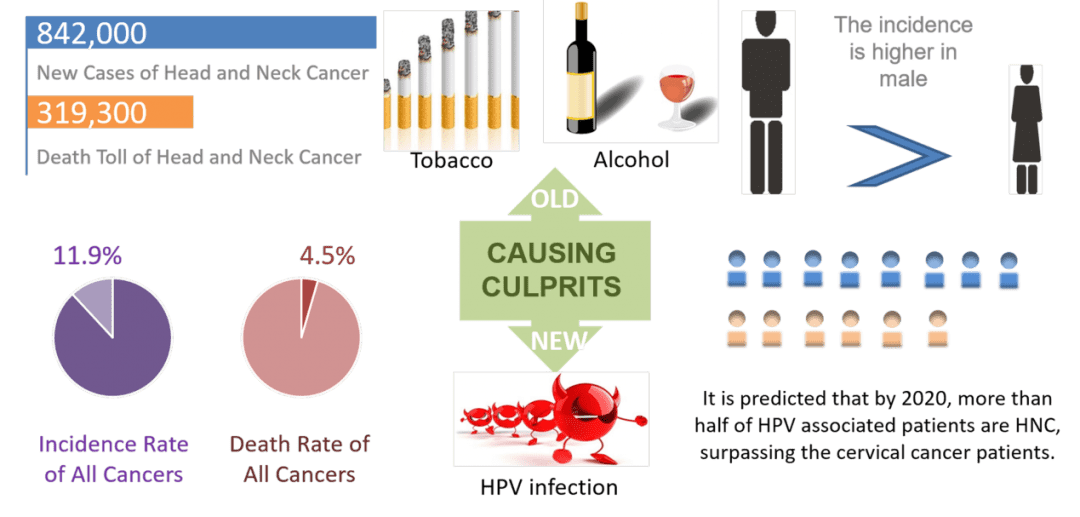Head and Neck Cancer (HNC) is a complicated and difficult disease that can easily infiltrate surrounding tissues/organs and induce metastasis. According to cancer statistics, there were 319,300 deaths worldwide due to HNC in 2012, and this has shown an ascending trend year by year.
HNC patients regularly have been reported to have dysphagia, respiratory disorders, xerostomia and other symptoms, which can get worse due to lack of appetite, weight loss, and nutritional deficiency. In the clinic, they are usually treated by surgery, radiotherapy, and chemotherapy. However, significant therapeutic improvements have not been achieved against cancer recurrence and metastasis. Especially, unsatisfactory distribution of chemotherapeutic drugs in the body greatly restricts the applications of chemotherapy. The arising applications of nano-formulations in biomedicine provide attractive tools and strategies for dealing with the problems of drugs used in HNC treatments.
In a recent review published in WIREs Nanomedicine and Nanobiotechnology, Jun Wu, Xiqiang Liu, and their co-workers from Sun Yat-sen University describe the current advances of targeted nanoparticles (NPs) applied to chemotherapy for HNC and discuss their potential future clinical applications. Targeted nanoparticles meet the materials and nanostructure requirements to make them accumulate in the tumor site, achieve controlled drug release, and have low toxicity to normal tissues for effective HNC treatment compared with traditional therapy. The application of targeted NPs as drug carriers in HNC is paving the way for chemotherapy to be employed in the treatment of late-stage patients, in order to alleviate their pain and prolong life.
Contributed by the Authors

















